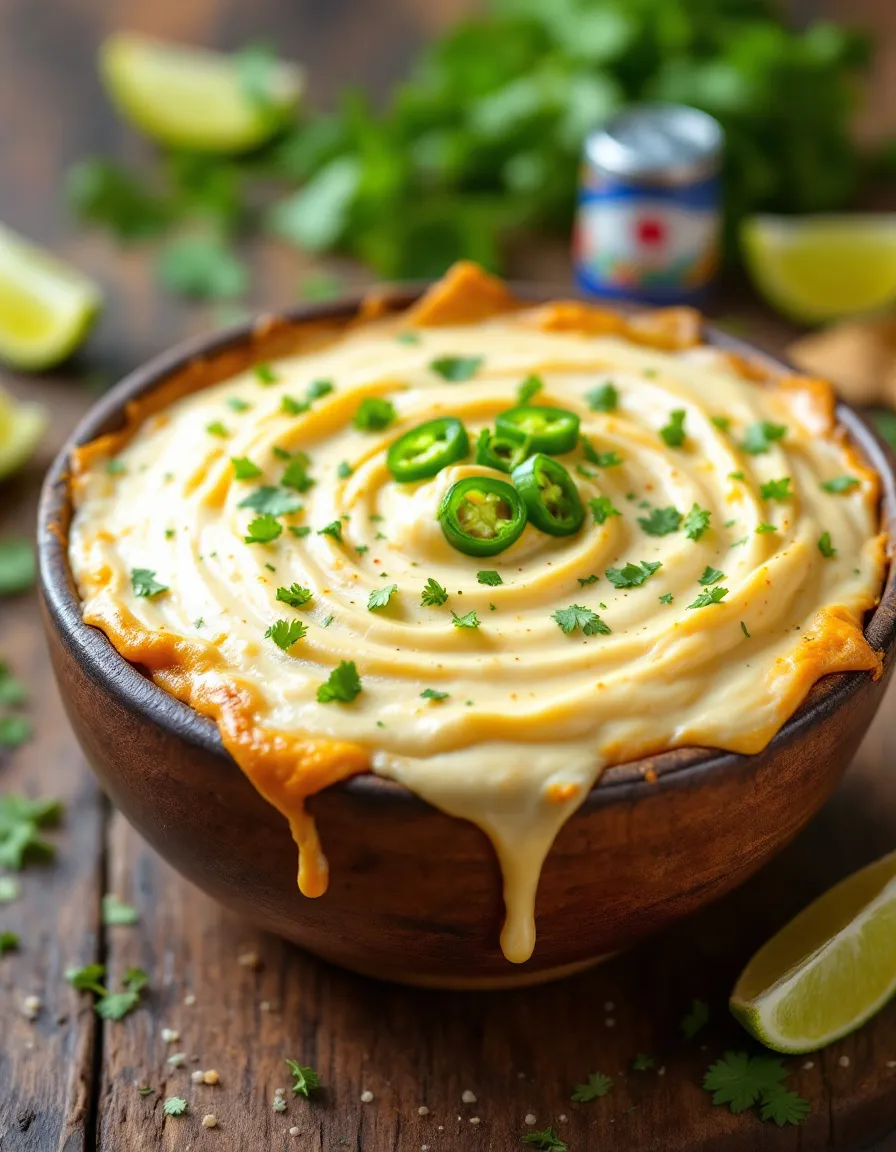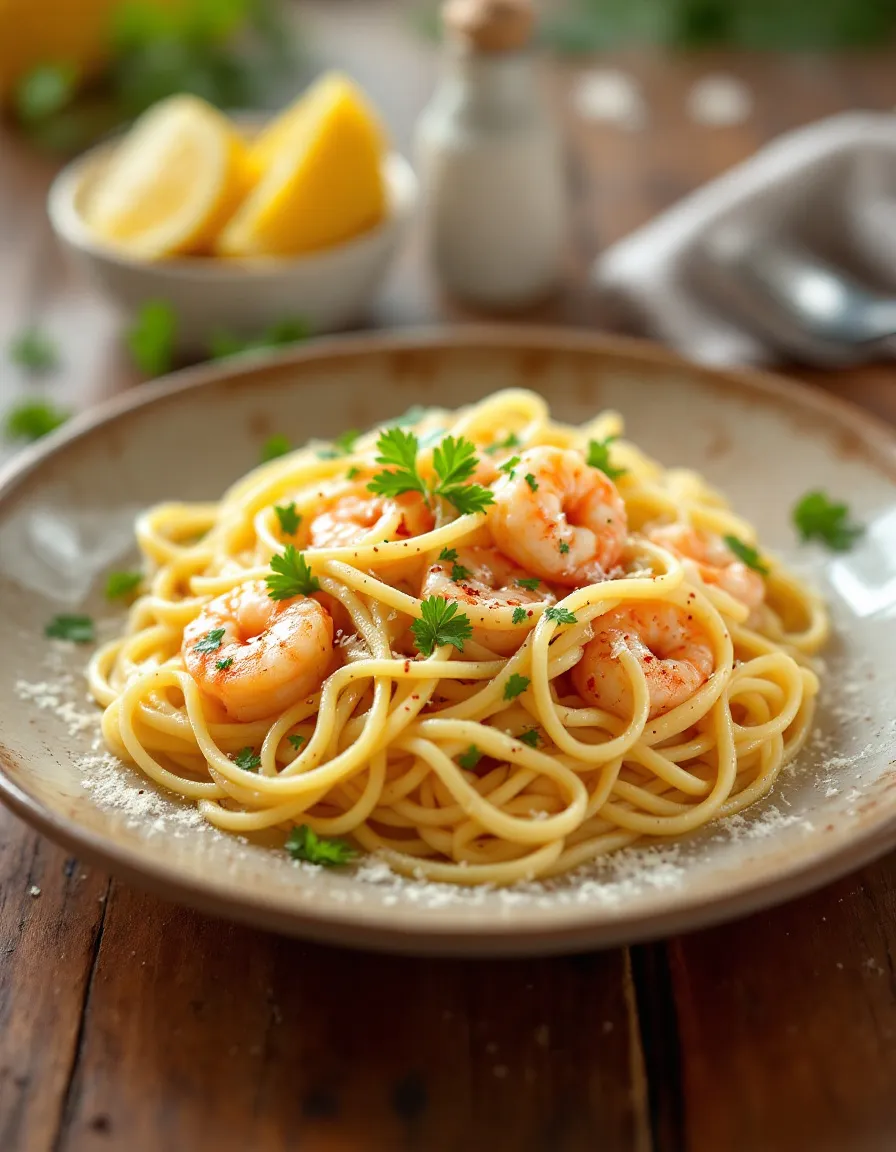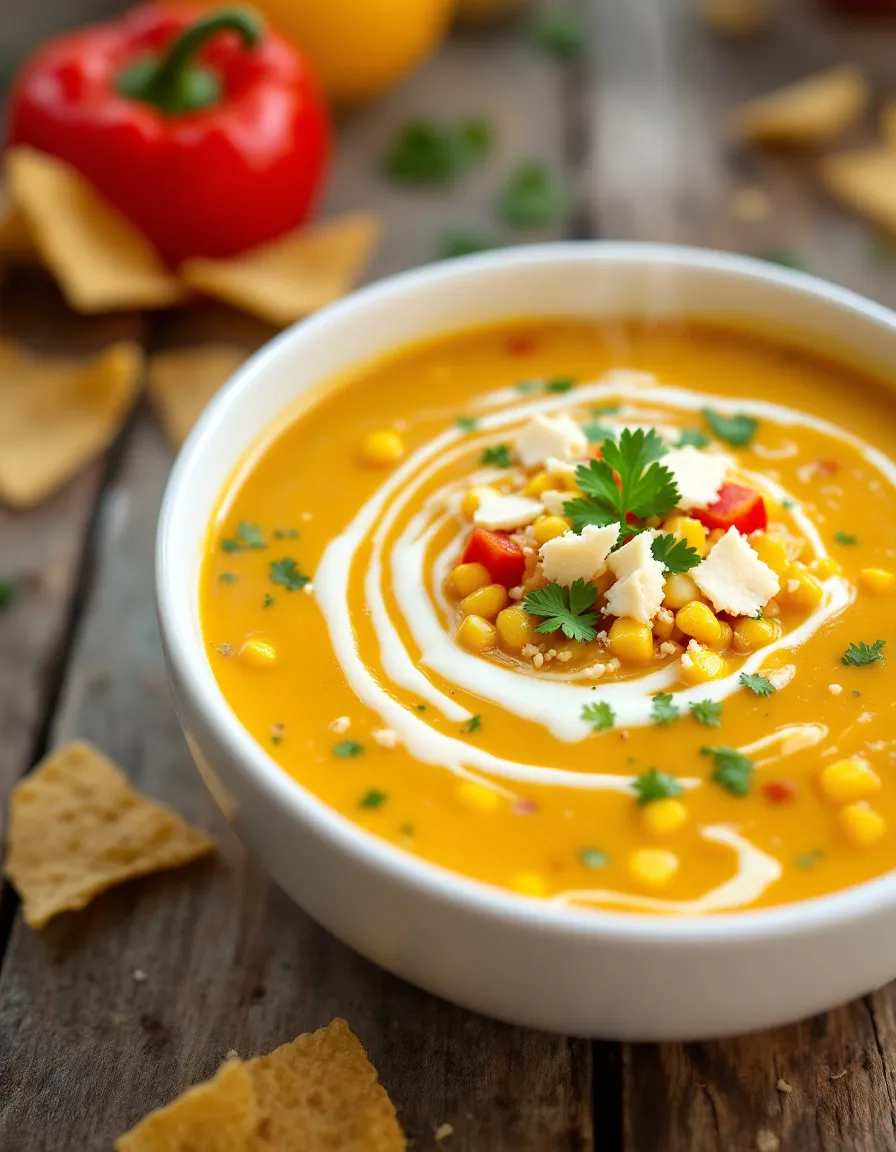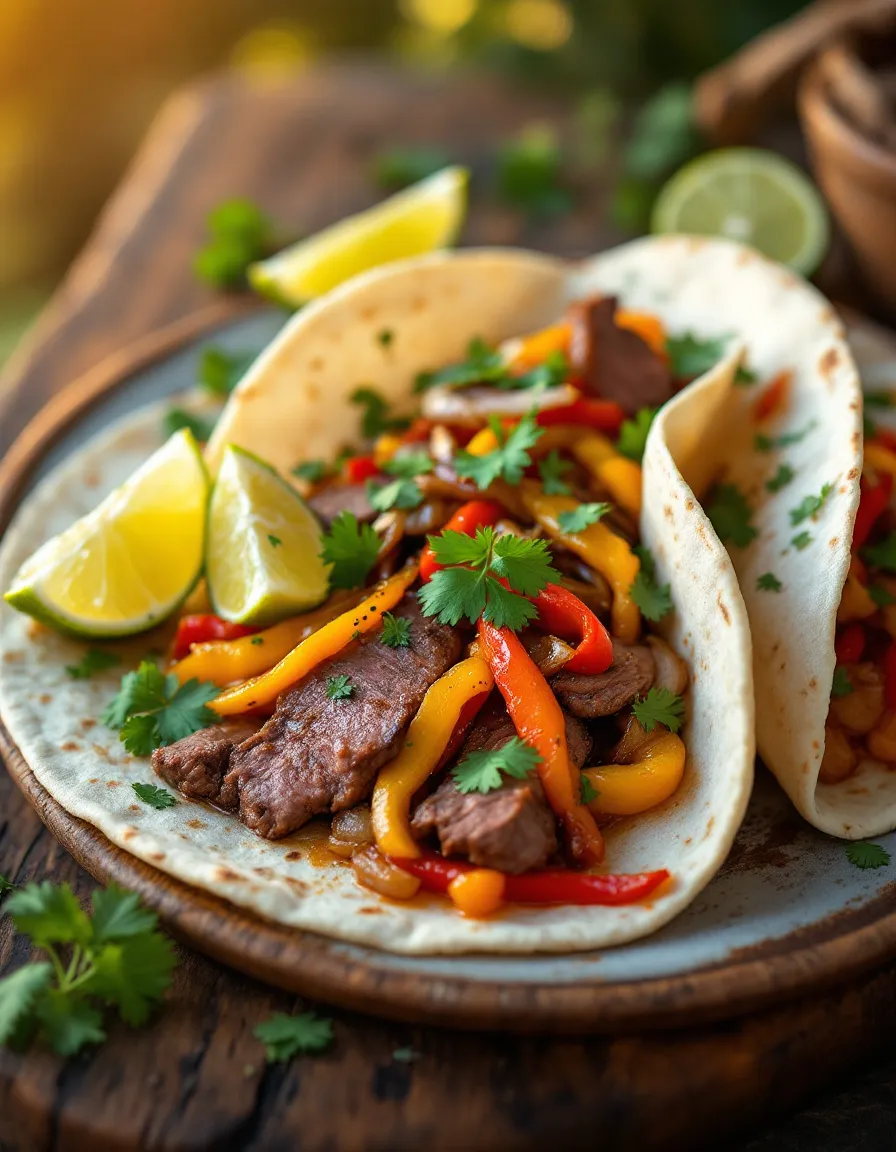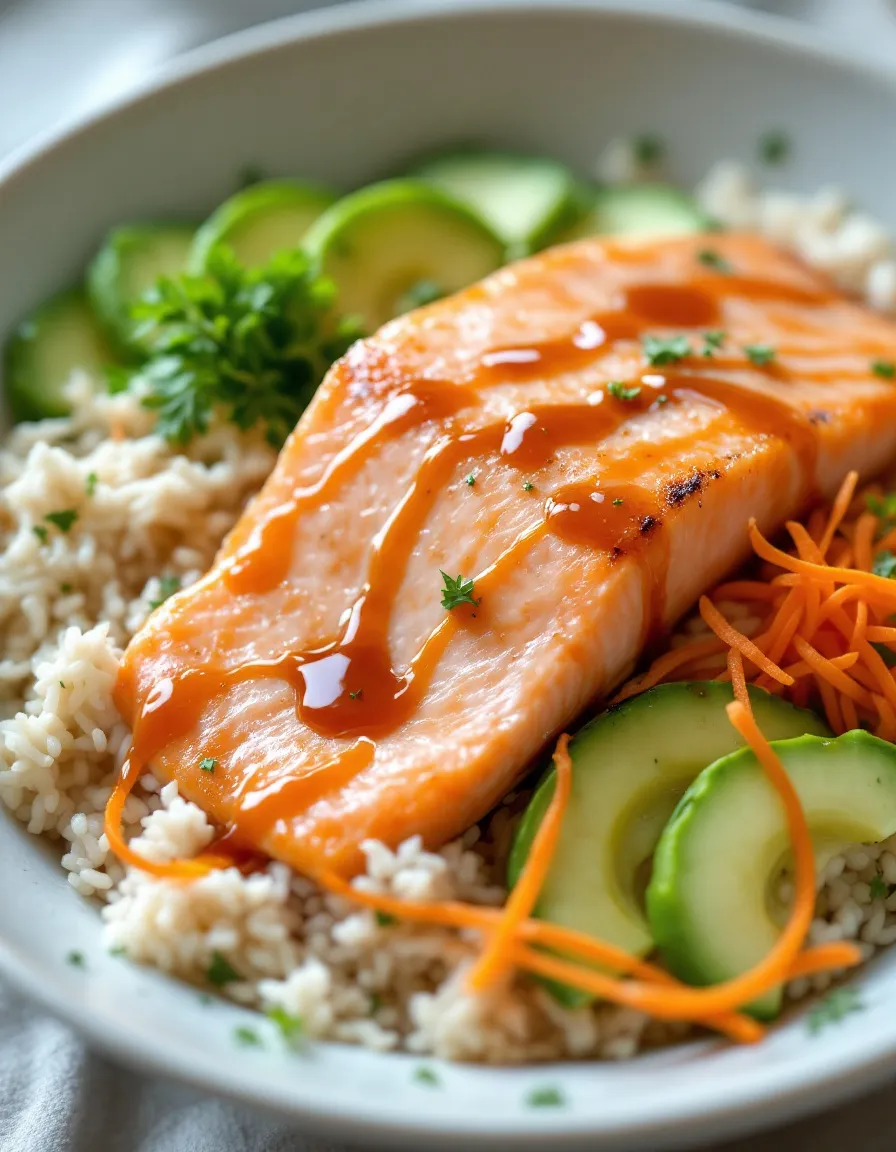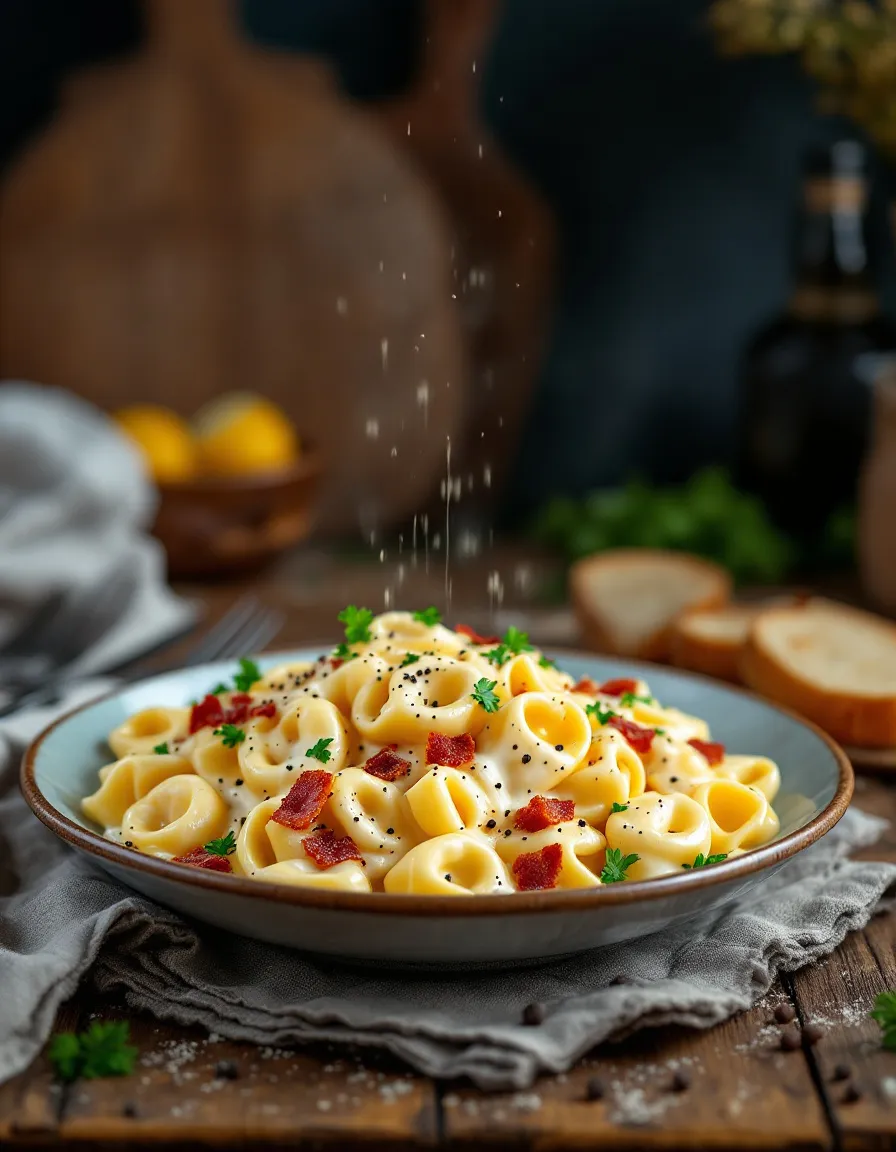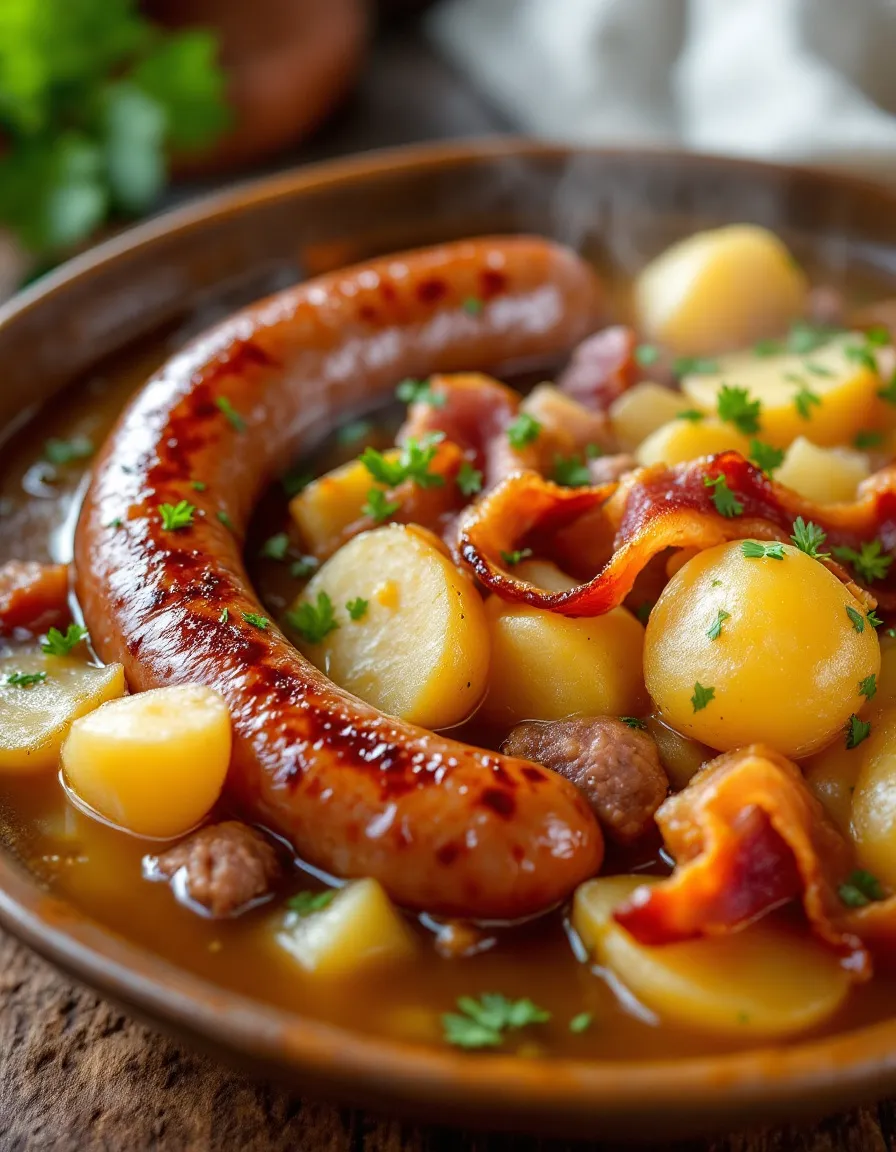Refreshing Blackberry Margarita Smash: A Perfect Summer Cocktail
Blackberry Margarita Smash is a delightful twist on the classic margarita, blending the sweet and tart flavors of fresh blackberries with the zesty kick of lime and the smoothness of tequila. This refreshing cocktail is perfect for summer gatherings, pool parties, or simply unwinding after a long day. Imagine sipping this gorgeous, vibrant concoction while lounging in the sun, the fruity aroma mingling with a hint of salt in the air. The balance between the rich berry flavor and the bright citrus will leave you craving more!
The beauty of the Blackberry Margarita Smash lies in its simplicity. With only a few ingredients, this cocktail can be whipped up in no time, making it an easy addition to any occasion. Featuring muddled blackberries for a burst of flavor and natural sweetness, this drink not only looks stunning but also caters to the senses. The vivid purple hue enhances its appeal, ensuring it stands out on any table setting. Once you try this delicious drink, you’ll find it hard to go back to ordinary margaritas!
Quick Recipe Highlights
- Flavor Profile: The cocktail combines the sweetness of fresh blackberries with the tartness of lime juice and the warming notes of tequila, creating a perfectly balanced drink.
- Texture: The drink is smooth and refreshing with a slight texture from the muddled blackberries, giving it a wonderful mouthfeel.
- Aroma: Inviting notes of ripe blackberries meld with zesty lime, creating an aromatic experience that awakens the senses.
- Visual Appeal: The deep purple color of the cocktail is visually striking, enhanced by fresh blackberry garnish for an eye-catching presentation.
- Skill Level Needed: This cocktail is easy to prepare, perfect for beginners and seasoned mixologists alike.
- Special Equipment: A muddler or a spoon is required to crush the blackberries, alongside a cocktail shaker for mixing the ingredients.
Recipe Overview
- Difficulty Level: This Blackberry Margarita Smash is classified as easy, making it accessible for anyone looking to impress guests without complicated techniques.
- Category: This cocktail fits perfectly in the beverage category and is ideal for summer parties or casual get-togethers.
- Cuisine: Inspired by traditional Mexican margaritas, this recipe blends a classic cocktail approach with fresh, seasonal ingredients.
- Cost: The approximate cost of this cocktail is budget-friendly, making use of affordable staples like blackberries, lime, and tequila.
- Season: Best enjoyed in the summer when blackberries are in peak season, this cocktail captures the essence of warm weather refreshment.
- Occasion: Perfect for summer barbecues, birthdays, or simply relaxing on the patio, this drink brings an element of fun to any gathering.
Why You’ll Love This Recipe
Blackberry Margarita Smash is a cocktail that tantalizes your taste buds with its sweet and tangy flavors. The combination of fresh blackberries and refreshing lime provides a burst of taste that feels delightful on a summer evening. The smooth tequila complements the berry’s natural sweetness, creating a drink experience that is both vibrant and refreshing. This cocktail not only quenches thirst but also invites a social atmosphere, making it a perfect companion for gatherings with friends or family.
In addition to great taste, the convenience of making this cocktail cannot be overstated. With just a few simple steps—muddling the blackberries, mixing with lime and tequila, and straining over ice—you can have a delicious drink ready in minutes. It’s the perfect choice for those unexpected visitors or last-minute get-togethers when you want to serve something exceptional without the hassle of challenging recipes. This quick preparation creates less stress, allowing you more time to enjoy your company.
Nutritionally, while cocktails are often seen as indulgent, the use of fresh blackberries adds a healthy twist to the drink. Rich in antioxidants, vitamins, and minerals, blackberries not only enhance the flavor but also contribute beneficial nutrients. When enjoyed in moderation, Blackberry Margarita Smash makes it easy to indulge without severe guilt.
This cocktail also has strong social and entertaining value. With its vibrant color and delectable flavors, it becomes an instant crowd-pleaser. Guests are sure to be impressed, and it opens the floor to lively conversation about flavors and mixology. Sharing a well-crafted cocktail enhances the overall gathering experience, making you the star of the event.
Lastly, the cost-effectiveness of this refreshing cocktail makes it a staple in your summer drink repertoire. Fresh blackberries and common cocktail ingredients won’t break the bank, allowing you to host enjoyable gatherings without excessive expenditure. This accessibility means you can whip it up anytime the moment calls for a celebration, big or small.
Historical Background and Cultural Significance
The roots of the margarita can be traced back to the late 1930s, where stories of its creation differ, yet they often center around the melding of tequila with lime and some form of sweetener. In Mexico, the margarita has been celebrated as a beloved cocktail due largely to its refreshing nature, especially in unbearably hot weather. Its evolution into various styles is owed to the adventurous spirit of cocktail culture, allowing fruits like blackberries to find their way into increasingly popular variations, like the Blackberry Margarita Smash.
Culturally, margaritas hold significance in Mexican traditions, often accompanying festive occasions like Cinco de Mayo and various holidays. As cocktails gained popularity worldwide, they adapted local ingredients, leading to unique regional variations. The inclusion of blackberries represents how traditional recipes can evolve, bridging local flavors with classic ones to create something entirely unique and exciting.
Over the years, the margarita has gone from a simple blend of tequila and lime to a sophisticated canvas for creativity, with modern versions whispering the artistry of mixologists. The Blackberry Margarita Smash embodies this innovation, as it showcases the increasingly popular trend of utilizing fresh, seasonal fruits in crafting cocktails that please both the eye and the palate.
Regional variations are also fascinating. In different parts of Mexico and the U.S., there are countless adaptations of the margarita. Some people prefer to infuse it with spicy chilies for a kick, while others lean towards sweetness. The incorporation of blackberries offers a delightful reprieve, promising a fresher take while still holding onto the cocktail’s heritage.
Ingredient Deep Dive
Blackberries
Blackberries have a beautiful cultural significance and history, originating from North America and parts of Europe. They have been used in culinary traditions for centuries, revered for their flavor and health benefits. Packed with antioxidants, they contribute to overall health and are known for supporting heart health and boosting the immune system. When selecting blackberries, look for plump, shiny, and deeply colored fruits while avoiding any that appear dull or mushy. For storage, keep them in the refrigerator in a shallow container, and consume them within a few days for freshness. If you’re in a bind, raspberry or blueberry can serve as great substitutes.
Lime Juice
Lime juice has cultural importance in many cuisines, especially in Mexican dishes. It’s an essential ingredient in margaritas, enhancing the overall flavor profile with its acidity and brightness. Nutritionally, lime juice is high in Vitamin C and has various health benefits, such as aiding digestion and boosting the immune system. When selecting limes, choose ones that feel heavy for their size and have a slightly glossy skin. For storage, keep limes at room temperature or refrigerate for prolonged freshness. If fresh limes aren’t available, bottled lime juice can substitute, though consider using a bit less due to its concentrated flavor.
Tequila
Tequila has a rich history rooted in Mexico, where the production of this spirit dates back to pre-Hispanic times. Traditionally made from the blue agave plant, tequila is infused with cultural relevance as a national spirit. Nutritionally, it is low in sugar and carbohydrates, making it a popular choice among those watching caloric intake. When purchasing tequila, opt for 100% agave for the best quality. Ideally, store it in a cool, dark place, and avoid repeated temperature changes to preserve its flavor. If you’re looking to experiment, mezcal can provide a distinctly smoky flavor while mixing well with the other ingredients.
Common Mistakes to Avoid
- Using Overripe Blackberries: Overripe blackberries can lead to overly sweet drinks and may affect the overall flavor balance. Always select ripe but firm fruit for the best results.
- Neglecting Fresh Ingredients: Fresh lime juice is vital; using bottled juice can significantly alter the taste, resulting in a less vibrant cocktail.
- Incorrect Ingredient Ratios: Ensuring the right proportions of tequila, lime, and blackberry is key for balance. Too much lime can overpower the drink, while too little tequila can make it watery.
- Over-Muddling: Muddling blackberries too vigorously can turn them into mush, losing the freshness of the fruit. Lightly press them to release juices without overbreaking them.
- Choosing the Wrong Tequila: Not all tequila is created equally. Avoid mixto tequila; opt for 100% agave tequila for a smoother taste.
- Not Straining Properly: Skipping the straining step can result in a gritty texture. Ensure you strain the mixture to remove any seeds or pulp for a smooth finish.
- Serving at the Wrong Temperature: This cocktail is best served chilled. Use ice and ensure that the ingredients are cold before mixing.
- Inadequate Garnishing: Simple garnishes, like lime wedges or additional blackberries, can elevate the drink’s appearance; don’t skip this step for a polished presentation.
- Forgetting to Taste: Tasting during preparation ensures that the drink meets your personal flavor preference; don’t hesitate to adjust sweetness or acidity.
- Ignoring Seasonal Variability: The cocktail’s flavor can vary significantly depending on the ripeness of the blackberries. Adjust your sugar levels based on the sweetness of your fruit.
Essential Techniques
Muddling
Muddling is the process of gently crushing ingredients to release their essential oils and juices. It’s essential for infusing flavors, particularly in cocktails like the Blackberry Margarita Smash. To master muddling, apply light pressure with a muddler or the back of a spoon, rotating it slightly rather than smashing the ingredients. Avoid over-muddling, which can create bitterness and an undesirable texture. A successful muddling should leave the ingredient intact while letting out enough essence into the cocktail.
Mixing
Mixing ensures that the ingredients are evenly distributed and well combined. In the case of this cocktail, you’ll use a cocktail shaker to blend the muddled blackberries with lime juice and tequila. This technique is important for achieving a harmonious flavor profile and desired chill. To master mixing, fill the shaker with ice before adding your ingredients. Shake vigorously for about 15-20 seconds. The visual cue for success is when the shaker becomes frosty on the outside, indicating that the contents are chilled.
Pro Tips for Perfect Blackberry Margarita Smash
Start with fresh, ripe blackberries to ensure the best flavor profile. The natural sweetness will enhance the cocktail’s overall taste and balance with the tartness of lime.
Control the sweetness by tasting as you mix; adjust with more lime juice or simple syrup based on personal preference and the natural balance of the blackberries.
Chill your glass before serving. Placing your glass in the freezer for a few minutes ensures your drink stays cold longer.
To enhance the visual appeal, consider rimming your glasses with salt by rubbing a lime wedge around the rim before dipping it into salt. This adds an extra flavor dimension.
Experiment with textures by incorporating a splash of soda water or tonic for a fizzy variation. This elevates the cocktail while making it sparkle.
Always use a fine mesh strainer when pouring to remove any pulp or seeds for a smoother drink.
If you’re making a larger batch for a party, prepare the blackberry mix in advance, then add tequila and ice just before serving to maintain freshness.
Lastly, choose quality tequila as the taste of the liquor itself can make or break the cocktail’s flavor profile.
Variations and Adaptations
Consider adding different fruits to your Blackberry Margarita Smash for a twist. Seasonal fruits like raspberries or strawberries can offer delightful variations while maintaining that fruity flavor.
For a spicier version, infuse your tequila with jalapeños beforehand to add a kick to the cocktail. The contrast of heat with the sweetness of the blackberries yields a deliciously complex drink.
Veganizing this cocktail is easy—simply ensure any sweetener added is plant-based. Agave syrup can be a fantastic option instead of honey.
If you’re watching your carbohydrate intake, consider using a low-calorie sweetener or eliminating sugar altogether by using sweeter blackberries.
You can also create a frozen version by blending the ingredients with ice, giving you a slushy texture that’s perfect for hot summer days.
For a unique presentation, try serving it in a mason jar or over ice in a stemless glass, garnished with fresh mint for a pop of color.
Serving and Presentation Guide
For an impressive presentation, consider serving Blackberry Margarita Smash in stylish cocktail glasses; a classic margarita glass is always a hit.
Garnish with fresh blackberries or a lime wheel placed elegantly on the edge of the glass. Fresh mint sprigs can also provide a vibrant contrast in color.
Utilizing fun straws or decorative cocktail picks to enhance the visual experience can engage guests and add a festive element to your gathering.
Temperature is crucial in serving this cocktail; pouring it over ice will keep it refreshing, while a chilled glass enhances the overall drinking experience.
Consider portion control by creating smaller servings for tasting at events, allowing guests to savor multiple cocktails while keeping overall consumption moderate.
Wine and Beverage Pairing
When pairing wine with a Blackberry Margarita Smash, consider a light, fruity rosé that complements the flavors of the blackberry without overwhelming it.
For non-alcoholic alternatives, sparkling water or homemade lemonade can provide refreshing palate cleansers that enhance the summer vibe.
If you enjoy coffee with your cocktails, a chilled coffee beverage featuring vanilla notes can create a delightful contrast to the sweetness of the blackberries.
Temperature is key; serve your wine chilled, much like your cocktail, to maintain that refreshing quality throughout the experience.
Storage and Shelf Life
To maintain its freshness, the Blackberry Margarita Smash is best enjoyed immediately. If prepared in advance, store any leftover mixture in the refrigerator, ensuring it’s sealed tightly.
The ideal temperature for the drink lies around 40°F (4°C), so keep it cool before serving and avoid exposing it to heat for extended periods.
Use an airtight container for storage to prevent oxidation. The signs of spoilage include off-smells or changes in flavor profile, largely due to the blackberries fermenting.
If reheating instructions apply—like for leftovers—you may wish to serve the drink over fresh ice instead of reheating, preserving its refreshing qualities.
For any excess prepared cocktails that you cannot consume, consider freezing the mixture in ice cube trays. These can be blended again into slushies at a later date.
Make Ahead Strategies
A prep timeline for this cocktail can enhance your party experience. Muddle blackberries and mix them with lime juice in advance, storing the mixture in the refrigerator.
Timing is crucial; ensure that you only add the tequila and ice right before serving to maintain the fresh flavor.
Quality is impacted by ingredient exposure to air; ensure the blackberry mixture is sealed tightly to prolong its longevity and stay flavorful.
When it comes to assembly, have all garnishes and glassware prepared beforehand for an efficient serving process, allowing you more time with your guests.
For fresh element additions, consider garnishing just before serving the cocktail to ensure the mint stays vibrant and other decorations appear lively.
Scaling Instructions
For a smaller gathering, halving the Blackberry Margarita Smash recipe is straightforward; simply adjust all ingredient amounts accordingly.
If you are planning a larger gathering, doubling or tripling the ingredients is easy, but be sure to maintain the balance of flavors to avoid overpowering the drink.
When scaling, consider the size of your mixing equipment—adding too much to a small shaker may prevent proper mixing and chilling.
Timing adjustments may also be necessary for large batches; allow yourself ample time for mixing and serving to ensure all guests are promptly served.
For storage considerations, remember that the mixture can have a shelf life, but preparing fresh for each serving usually yields the best flavor and experience.
Nutritional Deep Dive
A macro breakdown of this cocktail indicates a relatively low-calorie option, primarily from blackberries. The sugars present in the syrup can be adjusted to cater to dietary preferences.
Micronutrient analysis shows that blackberries are rich in Vitamin C and fiber, contributing to health benefits while enjoying a delicious cocktail.
The health benefits of consuming blackberries are extensive, as they have anti-inflammatory properties and promote heart health, making this drink a guilt-free choice.
When considering dietary modifications, the drink can be tailored to be lower in sugars by adjusting syrup quantities and utilizing fresh fruit effectively.
Proper portion analysis can keep indulgence moderate. Typically, one serving of this cocktail aligns with responsible drinking standards.
Dietary Adaptations
For a gluten-free version of the Blackberry Margarita Smash, all components used are naturally gluten-free, making it inclusive for gluten-sensitive individuals.
To create a dairy-free cocktail, ensure no cream-based ingredients are introduced; keep the recipe as is for a refreshing vegan option.
Low-carb adaptations may involve reducing or replacing the sugar content with alternatives like stevia or erythritol, allowing for a more keto-friendly cocktail.
Paleo-friendly options are similar, with a focus on using natural sweeteners or wholly eliminating sugar from the recipe.
For those adhering to other specific diets, such as Low-FODMAP, assess portion sizes, as certain fruits can be high in FODMAP content in larger servings.
Troubleshooting Guide
If you encounter texture issues with your Blackberry Margarita Smash, check the muddling technique. Ensure you’re not overly crushing the blackberries to avoid bitterness.
Flavor balance can be tricky; if it veers too sweet, add more lime juice gradually to restore balance. Using less syrup can also help offset sweetness.
Temperature problems arise when ingredients are too warm before mixing; ensure everything is properly chilled, especially the cocktail glass.
For any equipment challenges, using a sturdy muddler is essential for effectively extracting flavors while avoiding tool mishaps.
If you’re navigating ingredient substitutions or timing concerns, be flexible with adjustments. You’ll want to keep the fundamental essence of the cocktail, whether through varying fruit selections or tweaking sugar levels.
Recipe Success Stories
Many readers have shared positive feedback on the simplicity and refreshing quality of the Blackberry Margarita Smash, celebrating how easy it is to impress guests.
Success stories include readers adapting the recipe with personal twists, such as adding jalapeños and experimenting with various fruit pairings, showcasing the drink’s versatility.
Community engagement around this cocktail often features photography tips, as its vibrant colors create visually appealing social media posts.
Readers often recommend this cocktail for summer parties, with many noting it quickly becomes a favorite among guests and friends.
Frequently Asked Questions
Yes, you can prepare the blackberry and lime mixture ahead of time and store it in the refrigerator. Just mix in the tequila and ice when you’re ready to serve.
2. What type of tequila should I use?
It’s best to use 100% agave tequila for the best flavor. Look for reputable brands that specify this on the label.
3. How can I make this cocktail less sweet?
To reduce sweetness, you can cut back on the sugar or syrup and increase the lime juice for a more acidic taste. Tasting as you mix will help you find the right balance.
4. Can I use frozen blackberries?
Absolutely! Frozen blackberries can be used, though be sure to thaw them first and drain any excess liquid to avoid diluting your cocktail.
5. Is there a non-alcoholic version of this cocktail?
Yes, you can create a mocktail version by replacing tequila with soda water or a non-alcoholic spirit, mixing it with the blackberry and lime juice mixture.
6. What garnishes work best?
Fresh blackberries, lime wheels, or mint sprigs work wonderfully as garnishes, adding visual appeal and freshness to each drink.
7. How do I adjust the ingredients for a larger crowd?
For larger gatherings, simply multiply all the ingredients by the number of servings you need and mix accordingly. Providing self-serve options works well for ease.
8. What are some good food pairings with this cocktail?
This cocktail pairs well with light appetizers like guacamole, grilled shrimp, or fish tacos, all echoing the bright, fresh flavors of the margarita.
9. Can I substitute the tequila with another spirit?
While tequila is traditional, you can explore alternatives such as mezcal or even vodka if you’re looking for a different flavor profile.
10. How do I prevent the drink from being too pulpy?
Using a fine mesh strainer during pouring can help eliminate any solid blackberry pieces, resulting in a smoother cocktail experience.
Additional Resources
To explore more cocktails, check out our related recipes such as the classic Margarita and refreshing Fruit Punch.
Technique guides on muddling and mixing can provide additional skills and tips for expertly crafting cocktails.
Dive deeper into ingredient information, exploring the benefits of fresh fruits and premium spirits for a greater understanding of your cocktails.
Recommendations for essential bar equipment can help you elevate your mixology game, ensuring you have what you need to create amazing drinks.
Explore seasonal variations by using fruits that peak throughout the year to create a winter version of the Blackberry Margarita Smash!
Join the Conversation
We’d love to hear your thoughts on the Blackberry Margarita Smash! Share your adaptations and successes on social media with us.
Don’t forget to capture stunning photos of your cocktails; beautiful imagery helps inspire others to try new recipes!
Leave reviews and comments to connect with our community, sharing your experiences and tips for perfecting this refreshing drink.
Engage with fellow readers by exchanging recipe variations; together, we can explore exciting twists on this delightful summer cocktail.
The Recipe
Blackberry Margarita Smash
Serves: 2
Prep Time: 10 mins
Cook Time: 0 mins
Total Time: 10 mins
Kitchen Equipment Needed
- Muddler
- Cocktail shaker
- Strainer
- Glassware (cocktail glasses)
Ingredients
- 1 cup fresh blackberries
- 2 oz. tequila
- 1 oz. fresh lime juice
- 1 oz. simple syrup (or to taste)
- Ice for serving
- Salt for rimming (optional)
- Fresh blackberries and lime wedges for garnish
Directions
- Muddle blackberries in the bottom of a cocktail shaker until they are smashed and juicy.
- Add tequila, fresh lime juice, and simple syrup to the shaker.
- Fill the shaker with ice and shake vigorously for about 15-20 seconds.
- Strain the mixture into a glass filled with ice.
- Garnish with additional blackberries and a lime wedge. Serve immediately and enjoy!
Recipe Notes
- For a less sweet drink, adjust simple syrup to your taste.
- For added depth, consider infusing your tequila with herbs or spices ahead of time.
- This cocktail can easily be scaled up for larger gatherings; just maintain the same ratios when adjusting quantities.

